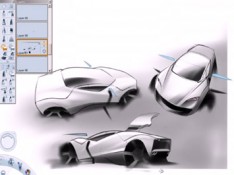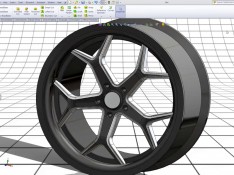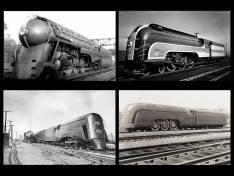Aesthetics

Baking Up a New Look, in Layers
The BMW i8 may be the most futuristic looking car on the road. But elements of its sliced-and-angled appearance, which might be called the layered look, are starting to show up on other vehicles and hint at an emerging trend in auto design. Layering is key to the “stream flow” design language of BMW’s “i” […]

Speaking the Buick language: capturing, understanding, and exploring brand identity with shape grammars
Developing and maintaining a consistent brand statement is an important aspect of developing a successful product. However, maintaining that statement is difficult due in part to the inconsistent and often insufficient understanding of brand by marketing, engineering, and industrial design. This paper presents shape grammars as a method for encoding the key elements of a […]

Emotional Car Design and good talents
When we listen to talk about car design often we hear words like "cool, love it, hate it, beautiful car, sexy, muscle car, strong carachter, dall, sad, happy, elegant, show off…." at so on. What is all this about? About what are we really talking? It is clear to me that to describe the Design […]

Semantic Analysis of Chinese Adjectives: A New Approach to Mapping the Form-based Metaphors in Automobile Styling
It could be argued that human experiences are full of conceptual and emotional metaphors. Metaphors are a significant part of language and play an important role in structuring human perception. Therefore it is ubiquity to find that people use different adjectives to express their emotional reactions toward an automobile styling. 3000 Chinese Adjectives in daily […]

A Feature-Line-Based Descriptive Model of Automobile Styling and Application in Auto-design
The knowledge of automobile styling and form shows significant signs of hard to capture and represent because it is mainly composed of the implicit knowledge of designers. It could be argued that a well-defined feature line, which conveys the information of the automobile styling an d the vehicle body structure, would be the efficient way […]

Japanese Aesthetics in Design
Contemporary Japanese life is embedded with rich cultural, religious and spiritual traditions. These traditions inform and dictate the way in which Japanese people live their daily life and also in the way the material world is constructed around them. These traditions go beyond merely a few simple guidelines by which to live ones life- rather […]

Towards semantic modelling applied to car aesthetics: a proposal
This presentation summarizes the authors’ research activities in the field of modeling tools for aesthetic industrial design. Starting from the requirements of the stylists during the conceptual design phase, geometric tools for shape manipulation have been proposed, which act on the geometric entities significant for the user. The ongoing work aims at integrating such tools […]

Design Thinking: White Roofs Are Cool
White roofs are set to rise in popularity in the coming years, and the reasons aren’t purely cosmetic. Current white roofers MINI, Toyota FJ Cruiser, and Ford Flex have carved out a unique design for themselves based on this treatment, but the reality is that there are energy-saving benefits, too.

Reflection lines: shape in automotive design
Reflection lines are an important tool for judging shape in automotive design. Gerald and Dianne look at the evolution of the design cycle, and argue that shape analysis tools in CAD (Computer Aided Design) have played an important role in evolutionizing the design cycle.

Harmonious colors
Even colors that seem the same can change in different light conditions. Clariant has developed a new color concept for automobile interior design that creates the same prerequisites for different materials.

A Free Form Feature Taxonomy
In this paper the notion of free form feature for aesthetic design is presented. The design of industrial products constituted by free form surfaces is done by using CAD systems representing curves and surfaces by means of NURBS functions, which are usually defined by low level entities that are not intuitive and require some knowledge […]







